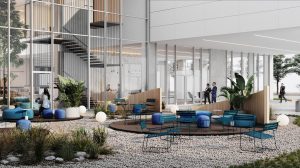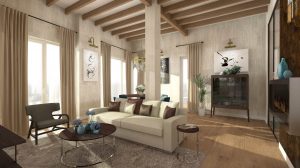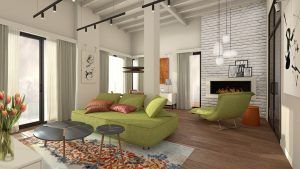Interiors
Our way of engagement with the space doesn’t reveal a boundary between the interior and various aspects of the exterior visible through its use. The examination of the space from the inside out is performed in the project conceptualization stage. We construct the interior through geometry, proportions, connectivity, lighting, exposure, and other measurable or less tangible elements of space and the built structure that shapes it.
We focus on elements typically associated with “the interior” in the further stages of project development. Once formed architecturally, interiors are enhanced through the selection and use of materials, colors, textures, furniture, lighting, fabrics, decorations, and details.
The working process is not abstract. We precisely define materials and the method of integrating elements of artisanal work, and choose suitable equipment and furniture. Material selection including, but not limited to stone, ceramics, wooden floors and coverings, internal transparent partitions, doors, as well as finished elements like lighting, sanitary ware, furniture, textile accessories, curtains, etc., is based on specific manufacturer offering, procurement, and delivery capabilities.
Material selection including, but not limited to stone, ceramics, wooden floors and coverings, internal transparent partitions, doors, as well as finished elements like lighting, sanitary ware, furniture, textile accessories, curtains, etc., is based on specific manufacturer offering, procurement, and delivery capabilities.
Throughout interior design – a stage where every detail is noticeable, the presence of superintending is significantly more valuable than in any other phase of work, as it ensures that the completed work aligns with the project’s vision.






